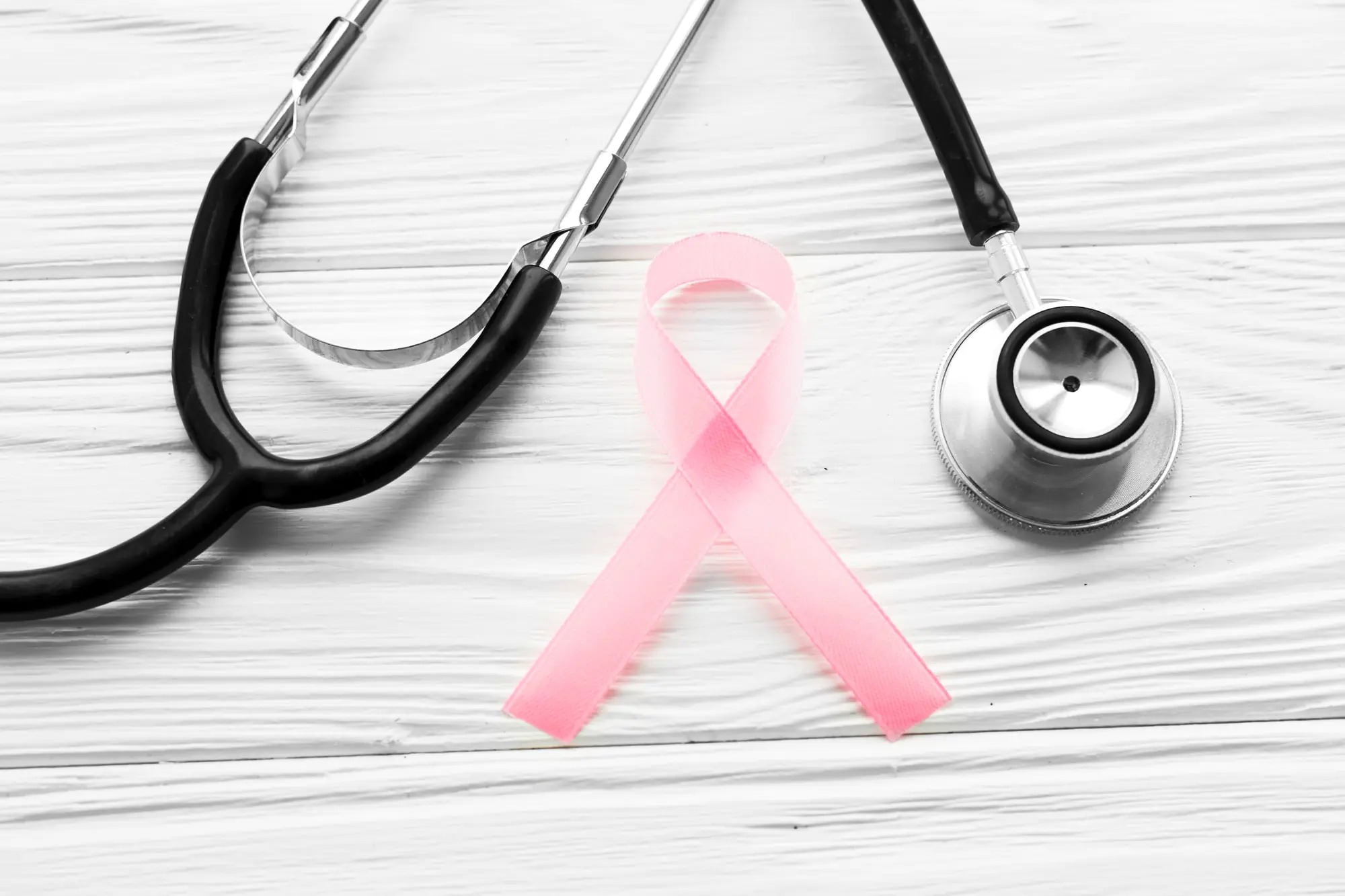
What is Breast Cancer?
What are the Symptoms of Breast Cancer?
Breast cancer is a type of cancer that can occur in any structure of the breast and spread to other tissues.
It progresses in five stages according to the spread to the tissues close to the breast tissue, the differentiation of the cells and the progression of the cancer.
Breast cancer mortality rate ranks second to other types of cancer.
There are many causes that trigger breast cancer.
As a result of the interaction of genetics, age, gender and environmental factors, the risk of developing cancer may increase.
Breast cancer is usually diagnosed by mammography.
The primary option for treatment is surgery.
Cancer treatments such as radiotherapy, chemotherapy and immunotherapy can also be applied to control cancerous cells.
Surgery and other treatments have serious side effects.
For this reason, necessary warnings are given to the patient before treatment.
What is Breast Cancer?
Breast cancer develops as a result of the proliferation of cancerous cells in the milk ducts or milk-producing lobules in the breast and turning into tumors.
Breast cancer usually occurs in women, it can rarely occur in men.
Breast cancer is divided into different types according to where it starts in the breast and its spread.
Some types of breast cancer include:
- Invasive breast cancer: It is a type of cancer that starts in the breast tissue and spreads to other breast tissues.
- Non-invasive (in situ) breast cancer: It is a type of breast cancer that starts in a milk duct or lobule and does not spread to other breast tissues.
- Ductal carcinoma: It is a type of breast cancer that is seen in the ducts that carry milk to the nipple and come out of the lobes.
It is divided into invasive and non-invasive. - Lobular carcinoma: Lobular are milk-producing glands in the breast.
The types of cancer that begin in this part of the breast are called lobular carcinomas.
It is divided into invasive and non-invasive according to its spread to other tissues. - Paget disease of the breast: It is a type of cancer that starts in the areola area, which is a thick and dark area at the tip of the breast.
- Phyllodes tumor: It is a rare type of breast cancer.
This cancer begins in the connective tissue of the breast. - Inflammatory breast cancer: It occurs as a result of the blockage of cancer cells in the lymphatic vessels in the skin.
It is a type of breast cancer that causes inflammation in the breast. - Angiosarcoma: It is a type of breast cancer that occurs in the blood and lymphatic vessels of the breast.
It occurs rarely compared to other species.
What are the Symptoms of Breast Cancer?
Breast cancer may not show any symptoms at an early stage.
In later stages, many breast cancer symptoms can be observed at the same time.
It is very important to recognize and treat cancer in its early stages.
Symptoms observed in breast cancer are:
- Differences in the shape and size of the breasts
- Feeling a lump in the breast
- Feeling a thickening of the chest and chest area during the menstrual cycle
- Clear or bloody fluid in the nipple
- Change in the nipple or areola
How Is Breast Cancer Diagnosed?
Breast cancer is diagnosed by physical examination and imaging techniques.
The diagnosis of breast cancer initially begins with an examination of the symptoms.
The specialist physician checks whether there is an abnormal change in the shape and appearance of the breast.
Afterwards, the lump is checked in the chest area.
He may use imaging methods such as mammography or breast ultrasound to detect cancer definitively.
Mammography is an X-ray of breast tissue.
It is an imaging technique usually used for breast cancer screening.
The MRI technique allows the evaluation of the internal tissue of the breast.
It is especially used in breast cancer patients who are difficult to diagnose with mammography.
What Causes Breast Cancer?
There is no definitive cause of breast cancer.
The influence of genetic and environmental factors can lead to an increased risk of developing breast cancer.
As a result of this interaction, mutations may occur in the cells in the breast tissue.
Abnormal breast tissue cells multiply and cancer develops as a result of spreading to other tissues.
Breast cancer risk factors include:
- Having people in the family or close relatives who have had the disease,
- Female gender,
- Smoking and drinking alcohol,
- Eating a diet rich in red and processed meat,
- Eating a diet low in calcium, vegetables and fruits,
- Being overweight and obese,
- Lead a sedentary life,
- Not breastfeeding the baby with breast milk,
- Using contraceptives,
- Exposure to radiation,
- Having received hormone replacement therapy,
- Having given birth to the first child after the age of 30.

What are the Stages of Breast Cancer?
Breast cancer is classified between stages 0-4.
The larger the number, the greater the severity of the cancer.
The classification of the stages of breast cancer is as follows:
- Stage 0: It is the early stage of cancer.
It is the stage where cancer cells do not spread to the surrounding tissues, that is, it is the non-invasive stage of cancer. - Stage 1: It is the stage where cancerous cells attack healthy tissues.
It does not spread to the lymph nodes.
The tumor is smaller than 20 mm. - Stage 2: The size of the tumor is larger than 50 mm.
Cancer spreads to nearby tissues. - Stage 3: It is the stage where the treatment of breast cancer becomes difficult.
At this stage, spread to the lymph nodes where the lymph fluids of the breast drain has begun. - Stage 4: The tumor has spread to organs that are not near the breast tissue.
It usually spreads to the bones, lungs, liver and brain.
In the staging of breast cancer, the lettering system called TNM is also used.
In the TNM system, N refers to the presence of cancerous cells in the lymph nodes, T refers to the size of the cancer, and M refers to the spread of cancerous cells to distant tissues.
How Is Breast Cancer Treated?
Surgery is the first treatment option in breast cancer.
Cancer treatments such as chemotherapy, radiation and immunotherapy can be applied to control cancer and eliminate cancerous cells in other tissues with surgery.
These treatment options are evaluated according to the size of the cancer, the age and general health of the patient.
In addition, the patient is informed about the side effects of the treatment.
Breast cancer treatment options include:
- Breast cancer surgery: There are three different types: mastectomy, lumpectomy and breast reconstruction.
Mastectomy is a surgical procedure in which all of the breast tissue is removed.
The lumpectomy method is a surgical procedure in which only the cancerous part of the breast structure is removed.
Breast reconstruction is a surgical intervention to restore the breast after mastectomy or lumpectomy procedures.
After surgical intervention, side effects such as blood clots, nerve damage and infection may be observed in the patient. - Chemotherapy: It destroys cancerous cells in the body through drugs.
Chemotherapy drugs are given into the circulation in two different ways, intravenous and capsules. - Radiotherapy: It is a treatment method that uses high-energy rays or particles that eliminate cancer cells.
- Immunotherapy: It is a method in which the cancer patient supports the body to fight cancer cells by strengthening the immune system.
In this treatment option, the response of the immune system is strengthened by targeting certain proteins. - Hormone therapy: Some types of breast cancer are affected by the hormones estrogen and progesterone.
In some patients, these two hormones promote the rapid proliferation of cancerous cells in the breast tissue.
Hormone therapy is aimed at stopping the growth of cells.
Is Breast Cancer Genetic?
The causes of breast cancer are unchangeable and modifiable factors.
Examples include genetics, race, age and gender as unchangeable factors.
As a result of genetic mutations, cancerous cells can appear and multiply in the breast tissue.
As a result, cancer may develop.
The genetic factor plays an important role in the origin of the disease.
At What Age Does Breast Cancer Happen?
As we age, the risk of breast cancer increases.
Middle-aged and elderly women are in the risk group for breast cancer.
Aging brings about a number of hormonal and physical changes in the body.
These changes cause it to become more prone to genetic mutations.
In addition, genetic mutations weaken the body’s ability to heal.
Therefore, less exposure to environmental factors that cause breast cancer reduces the risk.
Do Men Get Breast Cancer?
Men are less likely to develop breast cancer than women.
It is a pathological condition that needs to be treated like other cancers.
It can usually be seen due to high estrogen levels, some testicular diseases, obesity, alcohol use, lack of physical activity and advanced age.
Does Breast Cancer Cause Pain?
Breast cancer can cause pain in some patients.
Often the pain is felt in the breast or nipple.
Not all pain in the breast is considered a sign of breast cancer.
Women may feel pain in the menstrual cycle and in non-cancerous chest diseases.
If severe and continuous pain is felt, a specialist physician should be consulted.
Which Department Looks at Breast Cancer?
Diagnosis and treatment of breast cancer may involve more than one department.
An appointment should be made to the general surgery department for the diagnosis of the disease.
After diagnosis, treatment can be carried out with the oncology department.
Which Doctor to Go to for Breast Cancer?
It is necessary to go to a general surgeon for breast cancer.
During the treatment, information is obtained from health personnel such as oncologists, pathologists, radiologists and plastic surgeons.
Cancer treatment is a disease that requires more than one specialist physician to work together.
During the treatment processes, the nutritional and psychological status of the patient should also be evaluated.
For this reason, psychologist and dietitian support can be obtained.
With the online doctor application, the patient-doctor relationship can be ensured uninterruptedly throughout the treatment process.




